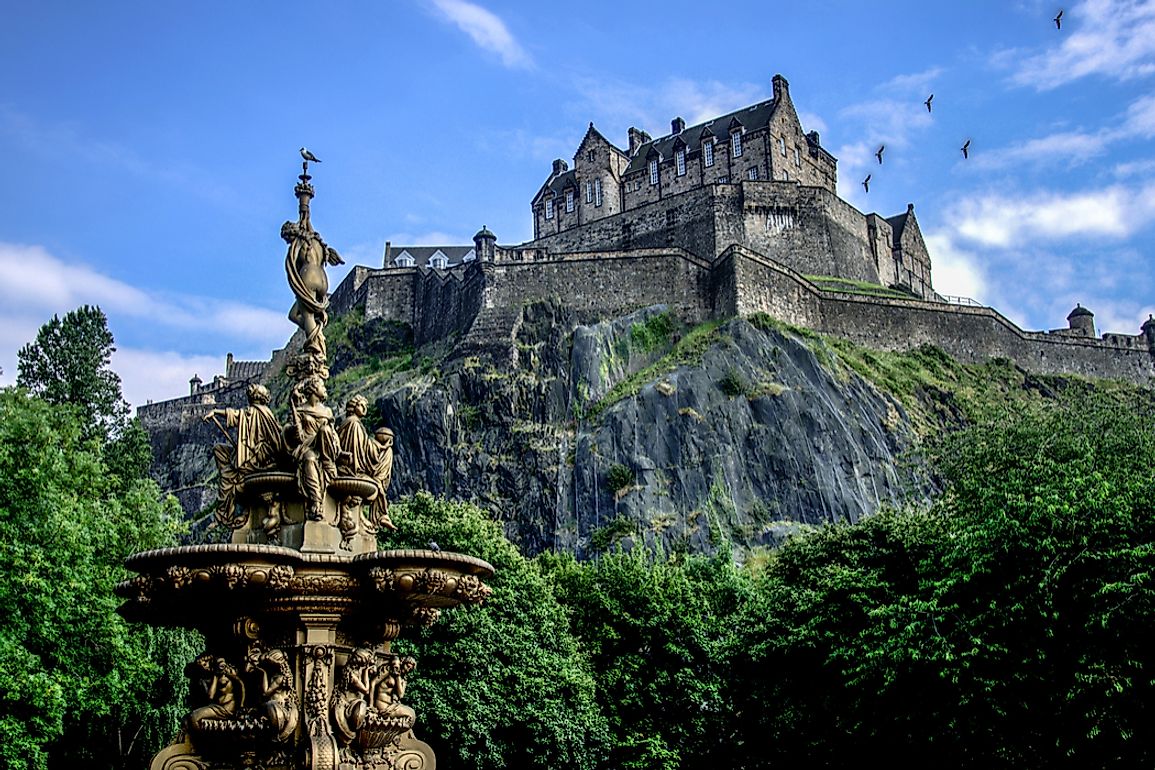Edinburgh Castle - Unique Places Around the World

Edinburgh Castle is located on a volcanic rock that erupted more than 340 million years ago, and legend has it that the first castle on the rock was known as the Castle of the Maidens. Over the centuries, there has been tension between the Scottish and the English monarchies. Any monarchy that held the castle held the rule over the city of Edinburgh as well as the whole of Scotland. Therefore, the castle was constantly under siege.
5. Description
The Edinburgh Castle is located in the old town of Edinburgh and is an ancient fortress and former residence for the royalty of Scotland. David I built the Edinburgh Castle in the 12th century. Parts of the castle were damaged during the Scottish Wars of Independence between the 12th and 14th centuries. After the wars, King David II initiated reconstruction efforts for the castle. After the death of King David II, King Robert II completed the rebuilding process. The use of the castle as a royal residence declined in the 15th century and ended in the 17th century after the coronation of King Charles I. In the 17th century, the castle was used for military barracks. During the 19th century, the castle was used as a prison. The British government currently owns the castle while the Historic Environment Scotland controls and manages the castle.
4. Tourism
The Edinburgh Castle is one of the most famous Scottish castles and a major tourist attraction for both local and international tourists. The castle attracts more than one million tourists annually. Tourist attractions in the castle include the annual Edinburgh Military Tattoo, St. Margaret’s Chapel (the oldest building in Edinburgh), and the National Museum of Scotland. Other attractions include the Scottish National War Memorial, crown jewels of Scotland, the Stone of Destiny, the One O'clock Gun, and the Mons Meg (a siege cannon developed in the late medieval ages). The Edinburgh Castle also offers spectacular views of the city as it stands more than 50 feet above Edinburgh.
3. Uniqueness
The Edinburgh Castle is one of the most iconic architectural and historical monuments of Scotland. The location of the Edinburgh Castle on a crag and tail feature brings a unique element to the castle. The crag and tail formed after glacial erosion of a basaltic volcanic dome during the Pleistocene age. The plug, now called the castle rock, has natural projections of sedimentary rocks, which provide a natural defense to the castle. The design and architecture of the castle also add to the uniqueness of the castle. Features of the castle that make it unique include the new Barracks, the Citadel, St. Margaret’s chapel, Mons Meg, the Half Moon Battery, and David’s Tower, the great hall and the crown square. As one of the iconic features in Scotland, the Edinburgh Castle has been used as a symbol in the coat of arms of the city of Edinburgh, on some bank notes, and postage stamps.
2. Habitat
The Edinburgh Castle is set within the unique and diverse habitat of Edinburgh city. A combination of hills and valleys shaped through the years of volcanic and glacial activity form the city habitat. Some of these hills include Arthur’s Seat, Blackford Hill, the Braid Hills, Calton Hill, the Castle Rock (on which the Edinburgh Castle is built), Corstorphine Hill, and the Craig Lockhart Hill.
1. Threats
Since the Edinburgh Castle is an old and ancient building, conservation measures are necessary to combat any structural threats to the castle. Climatic conditions such as winds, rainfall, and sunlight are likely to cause threats to the castle through weakening the materials used in the construction of the building. Geologists have also expressed concerns about the stability of the Castle Rock, which holds the castle.







